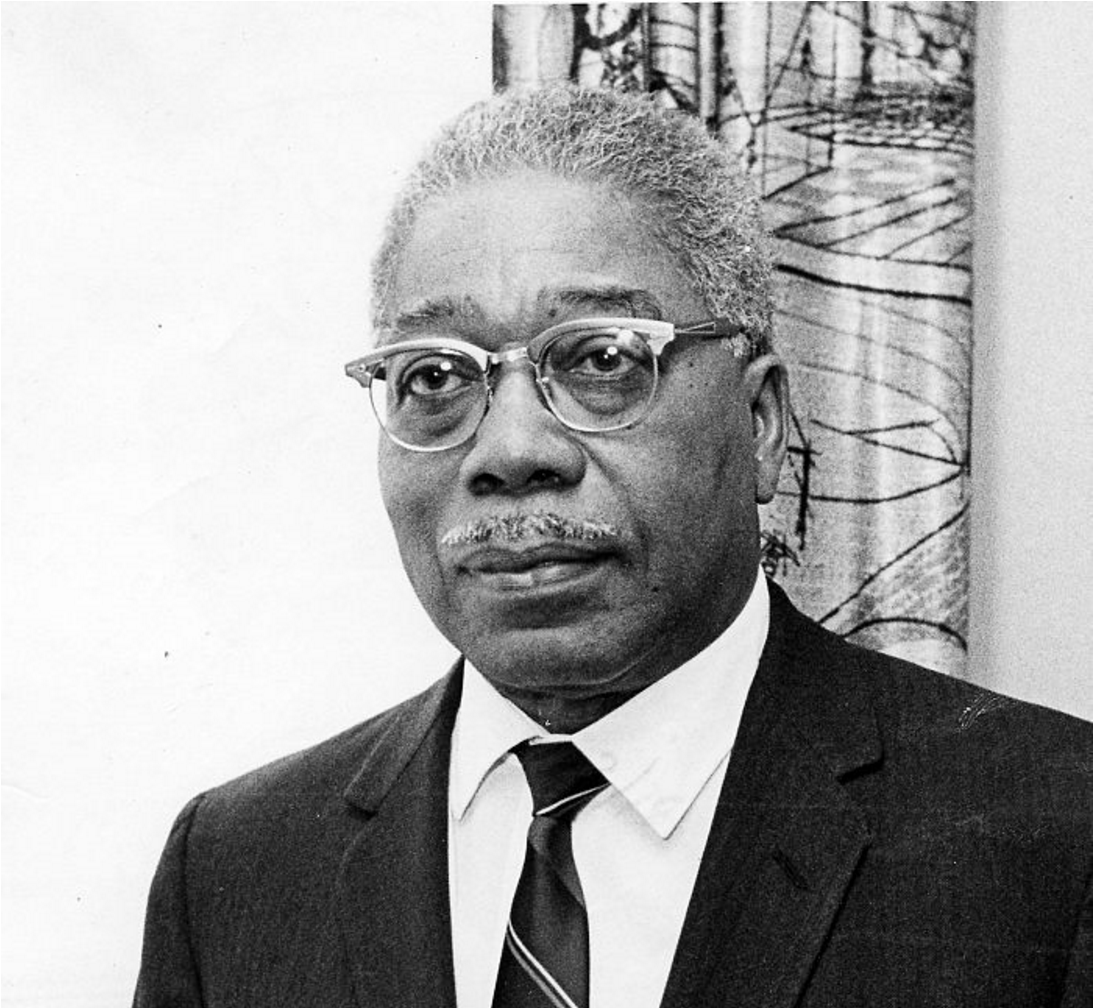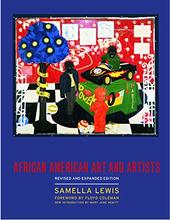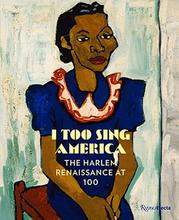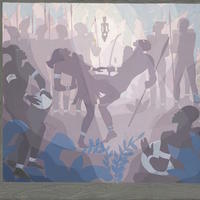More about Aaron Douglas
- All
- Info
- Shop
Works by Aaron Douglas

Contributor
Aaron Douglas came from humble Midwestern beginnings and rose to the heights of Harlem Renaissance renown.
Born in Kansas, he graduated from the University of Nebraska, then spent a few of the following years teaching art in Missouri and Kansas public schools. Kansas wasn’t known for its art scene (then or now), and the fact that Douglas was NU’s first ever Black art major reveals something about the prevalence (or lack thereof) of the Midwestern African American arts community at the time.
So in 1924 Douglas moved to NY, and quickly fell in step with the movers and shakers of the Harlem Renaissance. Of course he had his share of day jobs. Early on, W.E.B. Du Bois put him to work in the mailroom at the NAACP publication "The Crisis." But Douglas’ new connections panned out into lucrative creative opportunities; he soon began picking up commercial illustration work for "The Crisis," as well as for publications by other Black writers of the day, like Langston Hughes, Alain Leroy Locke, and James Weldon Johnson. Douglas quickly became a hot commodity, and his imagery accompanied writings that called passionately for the creative and political freedoms of the “New Negro”.
Douglas was an accomplished graphic artist as well as a painter, and he tended to work small (editorial illustrations) or really big (murals). Easel paintings were a rarity in his career, although that’s how many painters of the era were working. You can find some of his murals at Fisk University (Nashville) and Bennett College (Greensboro, NC). His famous mural series Aspects of Negro Life is now in the collection of the New York Public Library.
In New York, he studied with the German-born artist Winold Reiss. Although not a black man himself, Reiss urged Douglas to express his “race pride” by using African aesthetics in his art. Douglas’ stylized, geometric forms were decidedly contemporary--they tied into angular and romantic Art Deco and Art Nouveau styles. But their geometry and solidity did indeed intentionally reference African art, and supported Douglas’ themes of freedom and creative ascension for African Americans. The critic Richard Powell would eventually term Douglas’s work “Afro-Cubism.” Way to tell it like it is, since guess where Cubism came from in the first place...
Having made a name for himself in NY, Douglas left for Nashville to teach full time at Fisk, a historically Black university, where he founded the art department. He devoted the next 30ish years more to teaching than to his own work. Though he got *a lot* done along the way, his passion for educating young Black artists anchored both the beginning and end of his career.
Sources
- “Aaron Douglas, American Artist.” Encyclopedia Britannica. Accessed June 20, 2017. https://www.britannica.com/biography/Aaron-Douglas
- Johnson, Ken. “Black in America, Painted Euphoric and Heroic.” The New York Times. September 11, 2008. Accessed June 20, 2017. http://www.nytimes.com/2008/09/12/arts/design/12doug.html
- “Met Museum and National Gallery of Art, Washington, Each Acquire Significant Work by Leading Harlem Renaissance Artist Aaron Douglas.” National Gallery of Art. Accessed June 20, 2017. https://www.nga.gov/content/ngaweb/press/2015/acquisition-douglas.html
- Murrell, Denise. “African Influences in Modern Art.” In Heilbrunn Timeline of Art History. New York: The Metropolitan Museum of Art. April 2008. Accessed July 19, 2017. http://www.metmuseum.org/toah/hd/aima/hd_aima.htm
- “Treasures of the New York Public Library.” Accessed July 19, 2017. http://exhibitions.nypl.org/treasures/items/show/170
- Washington, Michele. “Aaron Douglas.” AIGA. Accessed 6/20/17. http://www.aiga.org/design-journeys-aaron-douglas
Featured Content
Here is what Wikipedia says about Aaron Douglas (artist)
Aaron Douglas (May 26, 1899 – February 2, 1979) was an American painter, illustrator, and visual arts educator. He was a major figure in the Harlem Renaissance. He developed his art career painting murals and creating illustrations that addressed social issues around race and segregation in the United States by utilizing African-centric imagery. Douglas set the stage for young, African-American artists to enter the public-arts realm through his involvement with the Harlem Artists Guild. In 1944, he concluded his art career by founding the Art Department at Fisk University in Nashville, Tennessee. He taught visual art classes at Fisk University until his retirement in 1966. Douglas is known as a prominent leader in modern African-American art whose work influenced artists for years to come.
Check out the full Wikipedia article about Aaron Douglas (artist)















